Top 10 Wildlife Photography Tips
Top 10 Wildlife Photography Tips
Text and photos by Heather Cline
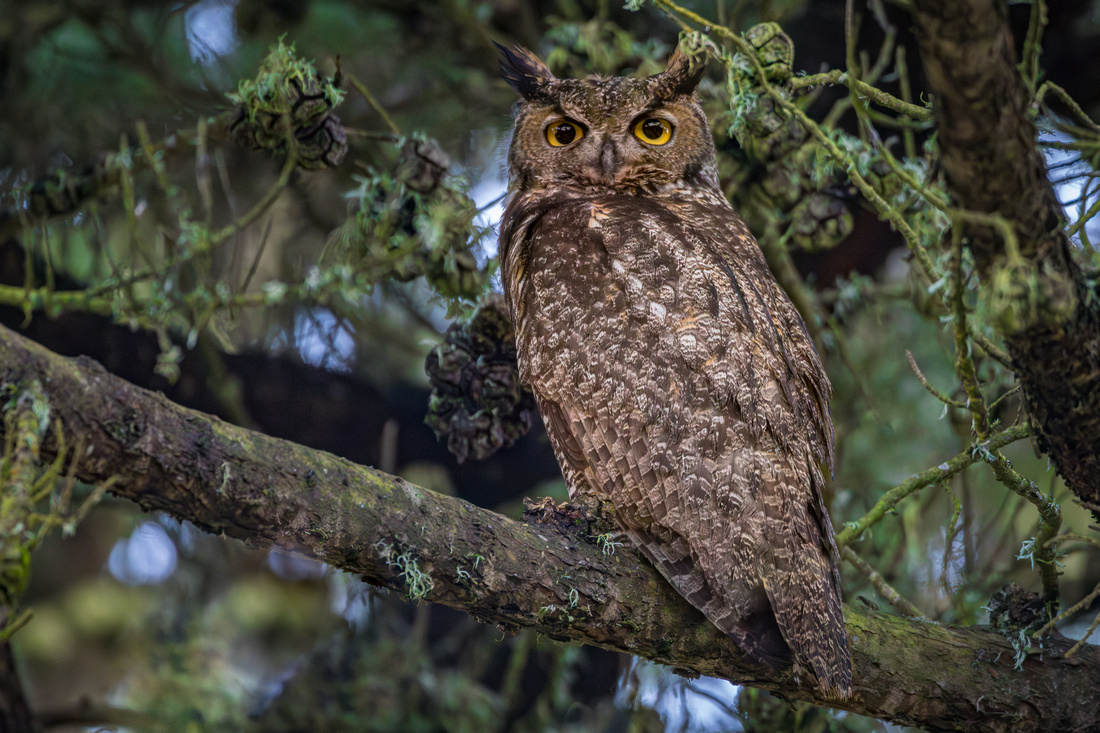 
Great-horned Owl |
I can think of no better way to enjoy and appreciate nature than through wildlife photography. I've learned more about the environment and the creatures that inhabit this amazing planet simply by going out into the field in pursuit of images. While it is an exciting genre of photography, it can also feel overwhelming to get started. Here are tips for getting your best wildlife images.
#1: Light Matters
Good light makes good photos, but great light makes. . . well, you get it. Whenever possible, shoot at the edges of the day when the light is softer, warmer, and at a lower angle. Most wildlife is active and dawn and dusk, so it makes sense to photograph them at these times.
 
Tom Turkey at sunrise |
#2: Focal Length / Lenses
If you have read my blog, you know I'm not a 'gear head' and I don't believe that having the absolute best equipment on the market is necessary to get good images. Having said that, I do believe you will get better images if you can give wildlife space to go about their business without feeling crowded or threatened. For those reasons, I invested in a couple telephoto lenses. One is a zoom lens and the other is a fixed focal length (aka: prime lens). I recommend at least 400mm to give you the reach you need and the space they need. This is one area where I say spend the money and you won't regret it.
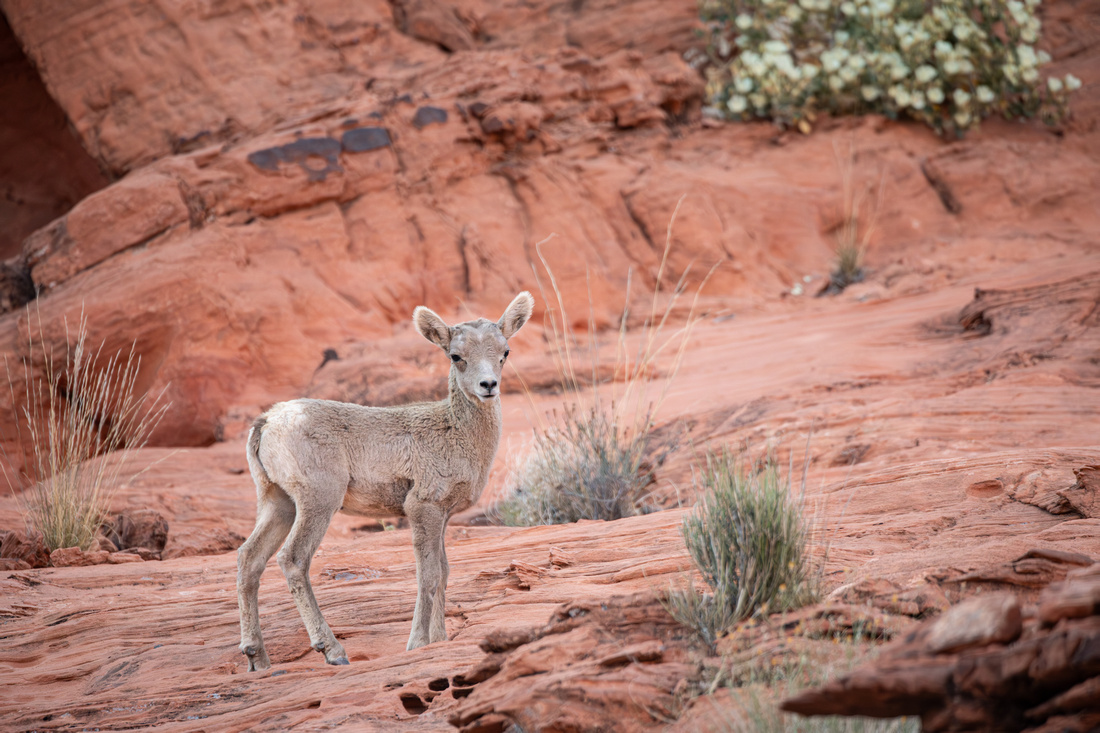 
Desert Peninsula Bighorn Sheep Lamb |
#3: Patience
Unlike the last tip, this won't cost you a thing! Patience is absolutely critical for good wildlife imagery. This may mean standing around for hours waiting for wildlife to show up or do something exciting. It also means going back out to do the same thing over and over and over again. If this doesn't sound like your cup of tea, seriously consider if wildlife photography is right for you. It does help to make sure you have met your nutritional needs, evacuated your bladder, and dressed comfortably before venturing out. If you are new to photography, you can leverage all this 'standing around time' to get familiar with your camera and all the fancy features it has!
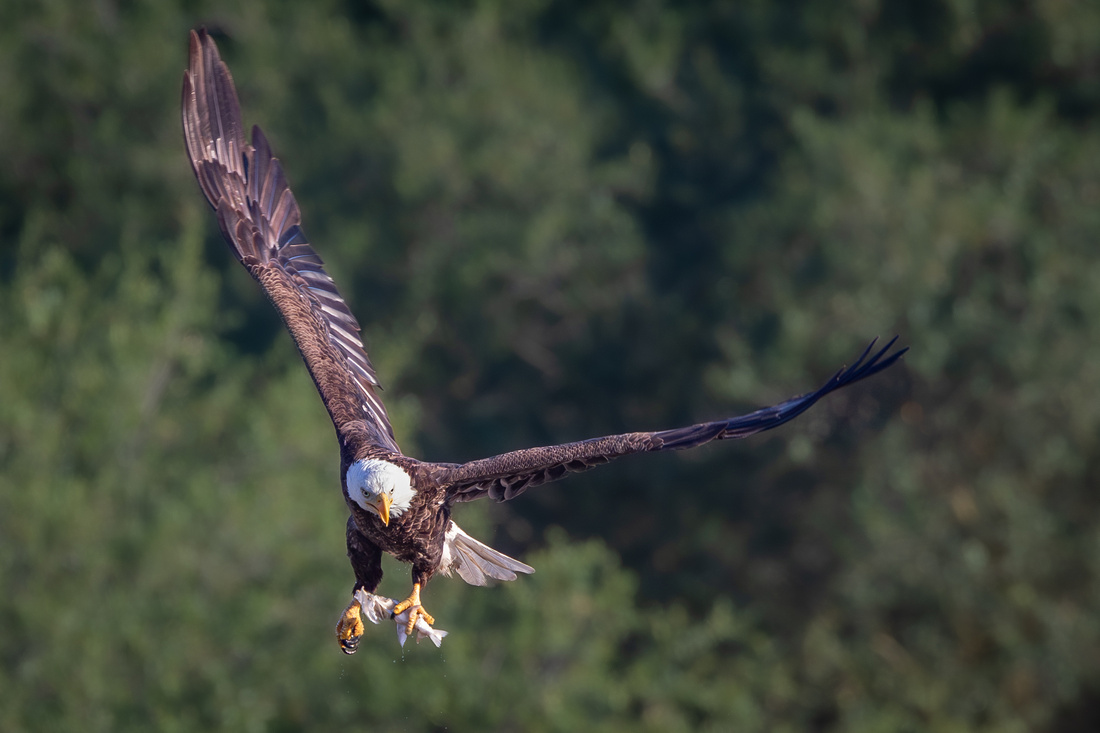 
Bald Eagle with fish |
#4: Know Your Subject
Knowing your subject will help you better understand when to arrive, how to position yourself, and when to be ready to shoot. For example, many bird species often poop right before they take off, so if you are looking to capture birds in flight this is a great piece of information to ensure you are ready for that decisive moment. The internet is an amazing (and low cost) way to learn about subjects before you are out in the field. Doing a bit of homework will pay off on your next shoot.
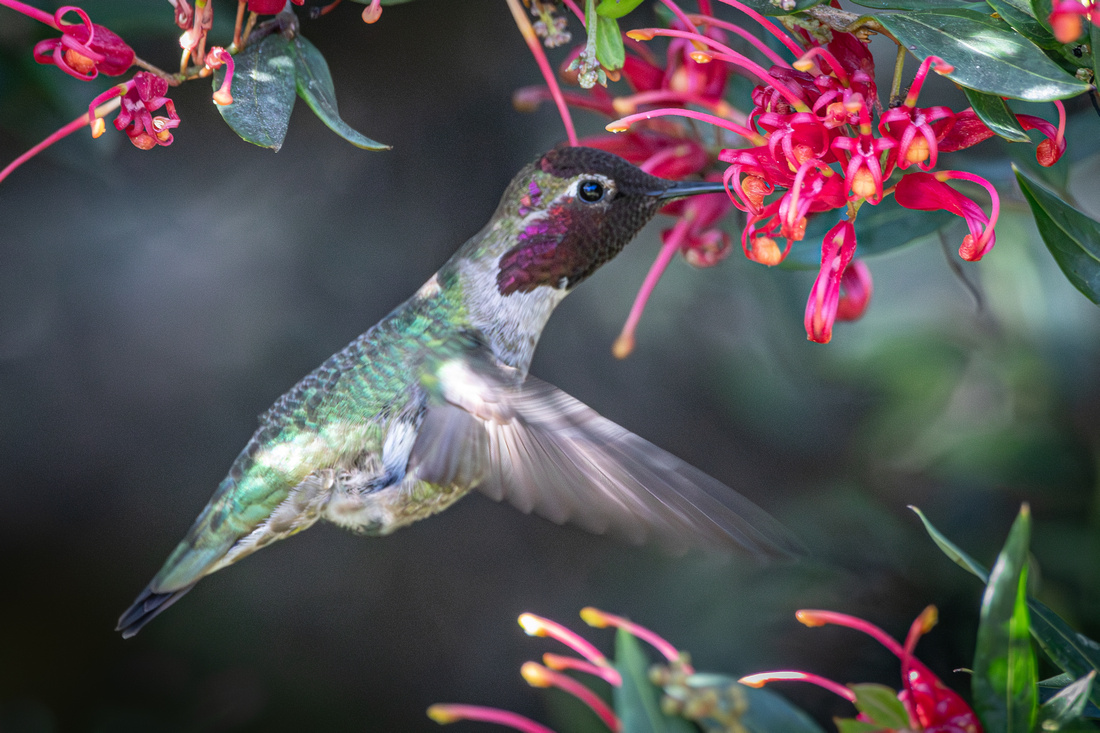 
Anna's Hummingbird - knowing which plants/flowers these birds visit makes it easier to know where to aim your camera and wait! |
#5: Telling A Story
When you are first starting in wildlife photography, you may be thrilled if you get a well composed, properly exposed, and sharp portrait of an animal - and there is nothing wrong with that. I congratulate myself every day that I can accomplish that, and I've been doing this for years. However, at some point, particularly if you are photographing an animal that you have captured before, you will find yourself wanting more. Something like exhibiting a specific behavior or interacting with other wildlife. This is all part of telling a story and I think this is what takes good shots to amazing shots.
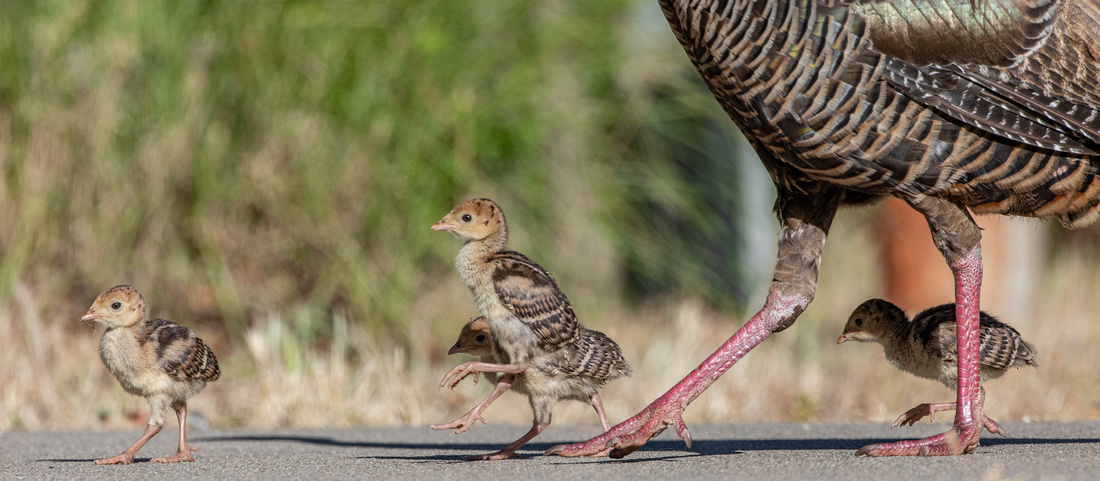 
Turkey chicks trying to keep up with mom |
#6: Get Out There
This one is so important, I wrote an entire post about it. There is absolutely nothing that replaces getting out there and doing the work, and that's all that needs to be said about this one.
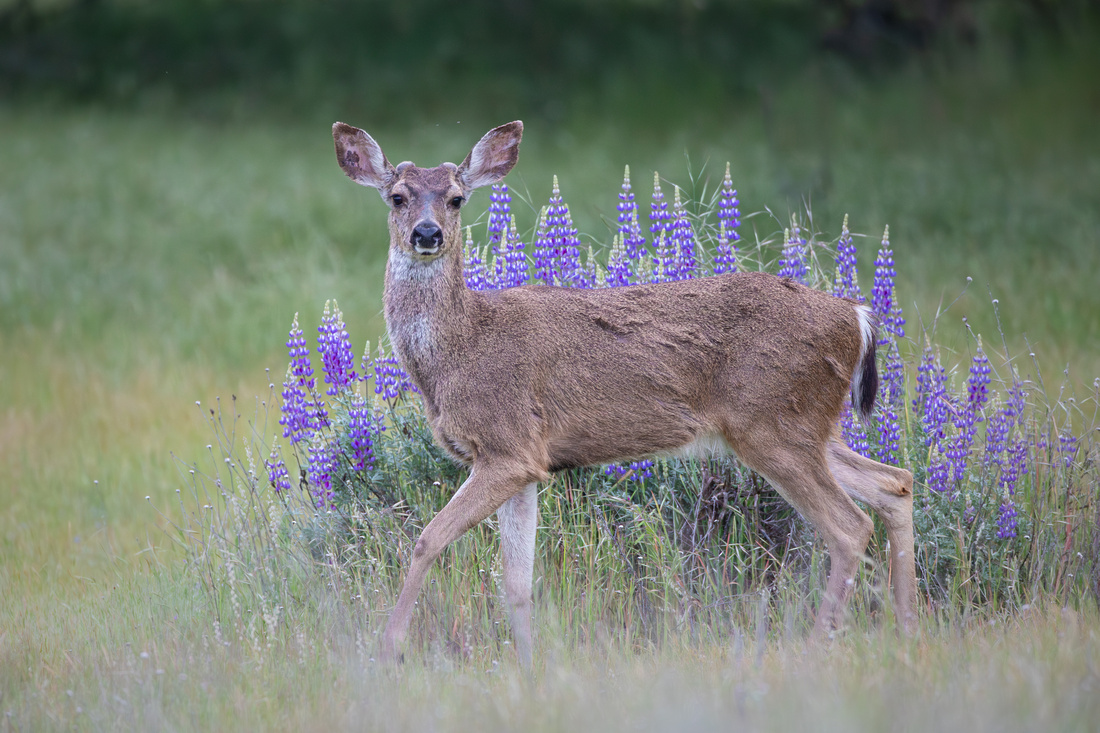 
Black Tail Buck at the beginning of Spring |
#7: Shutter Speed
The vast majority of wildlife images you see are captured with fast shutter speeds to ensure tack sharp eyes. Having a clear and sharp eye helps the viewer make a connection to the subject so it's critical to shoot at the highest shutter speed you can get away with given the lighting conditions. The world of camera/lens technology has a come a long way so keep these things in mind:
- Try pushing your ISO higher. I often shoot at 5000 ISO and use noise reduction in post processing. Newer cameras are performing amazingly well at very high ISO's!
- Utilize image stabilization. If you have exhausted your ISO range or simply want to keep it lower, try using this feature.
- Use a tripod or monopod. I learned photography using Velvia 50 ISO slide film so carrying a tripod around has been a way of life for me, but last year, I tried using a monopod and have been very happy with the results. It's lighter, faster to maneuver, and still allows me to bring down the shutter speed without sacrificing sharpness.
Breaking the rules: while it is most common to shoot at high shutter speeds, slowing it down can create awesome motion blur and truly unique images.
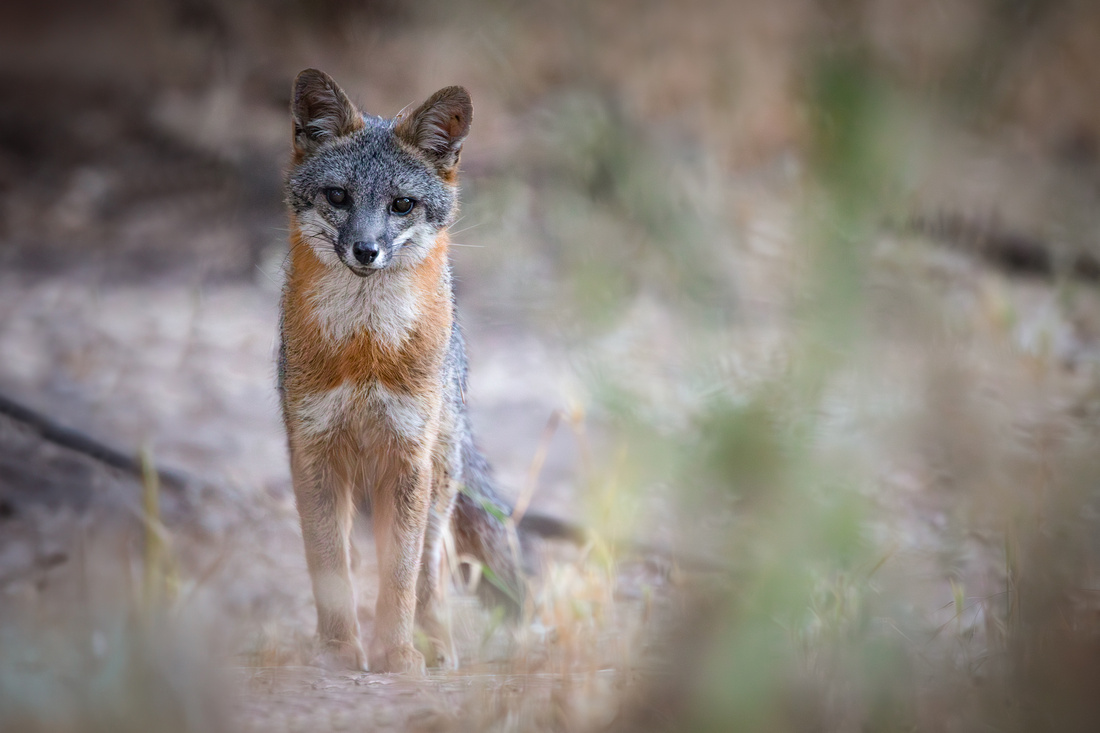 
Gray Fox shot at 8000 ISO to allow for a fast shutter speed |
#8: Use Aperture Priority Mode
The more time I invested in photographing birds, the more I realized how helpful the aperture priority setting on my camera was. Birds are probably the most challenging wildlife subject because they are small, fast, they move in between objects very quickly, and in and out of the light very quickly. For example, If a hawk is just sitting on a branch, you should have ample time to check your ISO, aperture, and shutter speed to make sure you will get a correct exposure. But - what if it suddenly dives down from that branch to catch some prey, then flies back up to another branch with its catch? You might have a great exposure of the original branch but find you have over or under exposed other frames as you wave your camera all around trying to keep up with that hawk. Aperture priority simply allows you to select the ISO and aperture and the camera will select the shutter speed to keep your image at the proper exposure. It's a nice insurance policy that has saved me a few times.
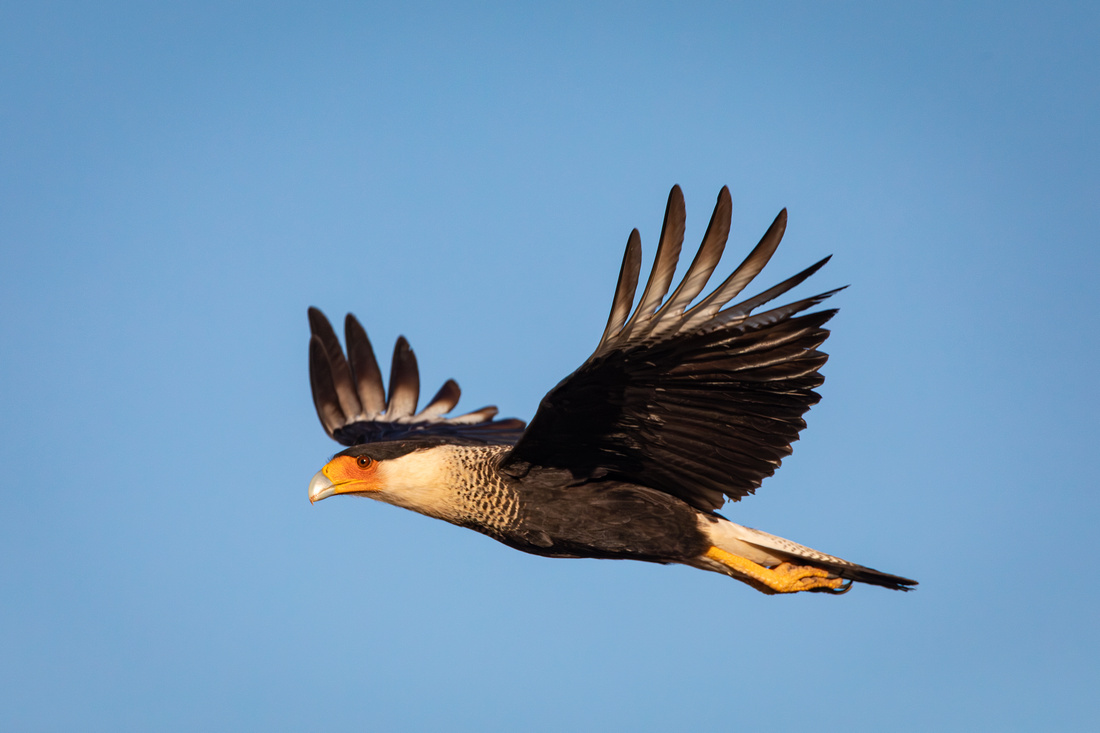 
Crested Cara Cara in flight |
#9: Fire Away
This one might seem pretty basic, but it is worth mentioning. All modern cameras offer the ability to take one frame each time you press the shutter or continuous frames if you hold down the shutter. If you are shooting any wildlife, set your camera to shoot on continuous. Once you see some action hold finger on the shutter and it will continue to take images. This is a benefit for two reasons. First, it improves your odds of getting the best possible image when there is a flurry of activity and second, if you are shooting at a slower shutter speed, the first image may have some blur, but subsequent images have a better chance of being sharp.
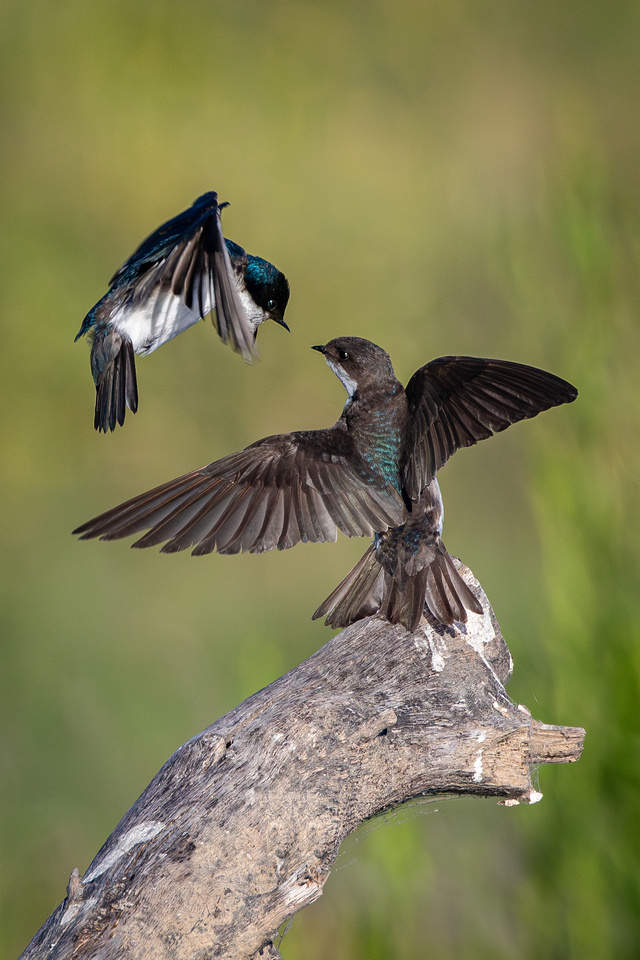 
Tree Swallow parent and fledgling interacting |
#10: Leave No Trace
The Leave No Trace principle of 'respect wildlife' might not seem like a tip to improve your wildlife photos but it's a form of paying it forward to ensure we can all come back to photograph these amazing animals now and into the future. It means prioritizing the well-being of the subject over the pursuit of the perfect shot. It may not seem that impactful, but stress caused by human interference can have detrimental effects on wildlife, affecting their reproductive patterns, feeding habits, and overall survival. This includes maintaining a respectful distance, not feeding/baiting, and avoiding wildlife during sensitive times. Using a telephoto lens and non-intrusive methods such as quiet observation are great ways to meet this principle.
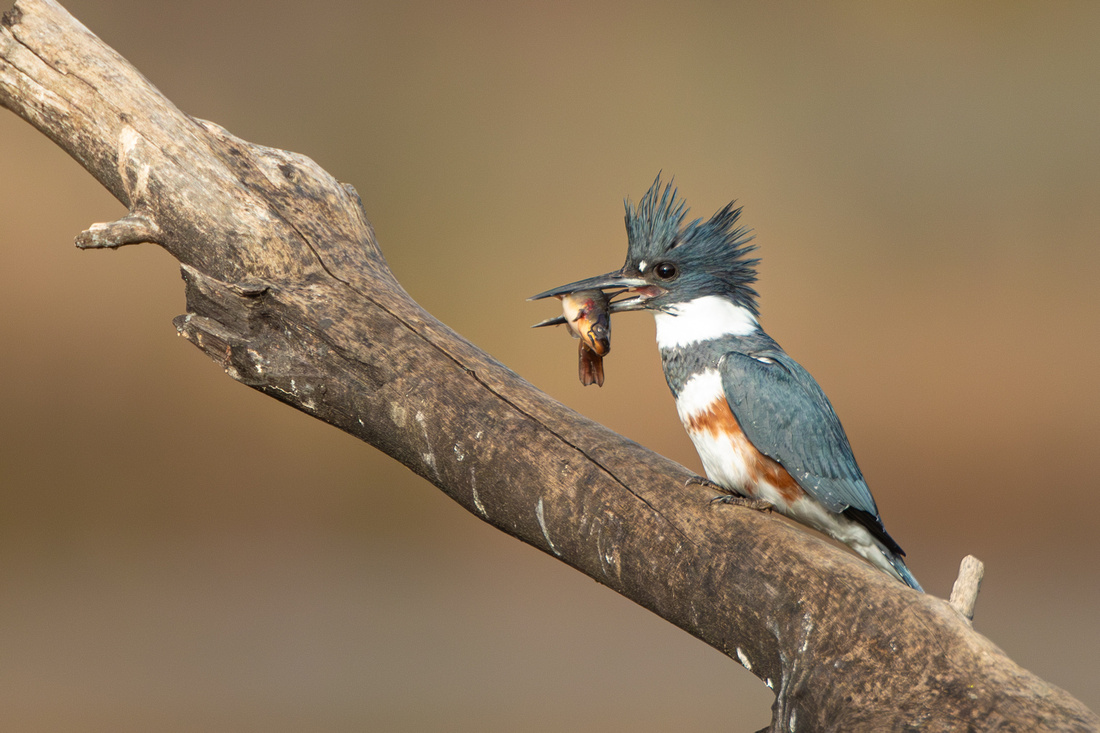 
Belted Kingfisher photographed from my vehicle with a 700mm lens |
I think anyone who spends their lives in the company of wildlife are incredibly fortunate, myself included. Every day that I am able to observe and photograph wildlife provides opportunities to learn something new and be humbled at how resilient they are. I hope these tips provide value and inspiration to take your wildlife photography to the next level.